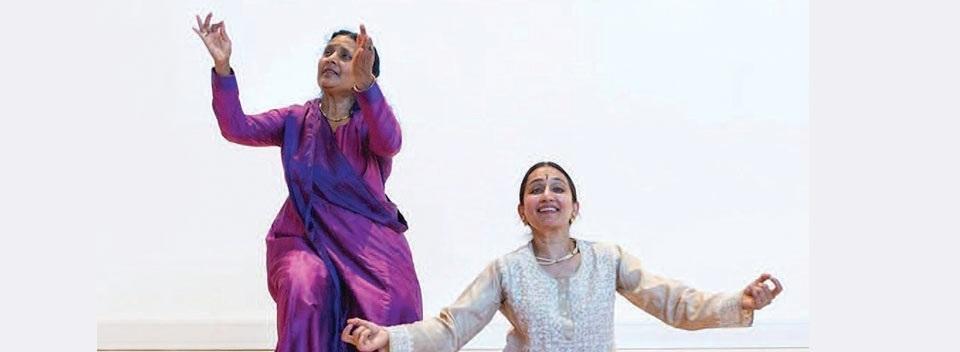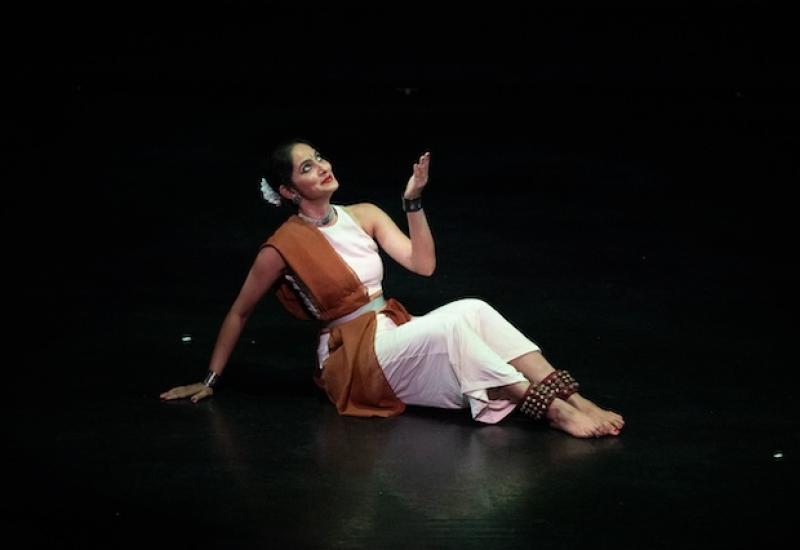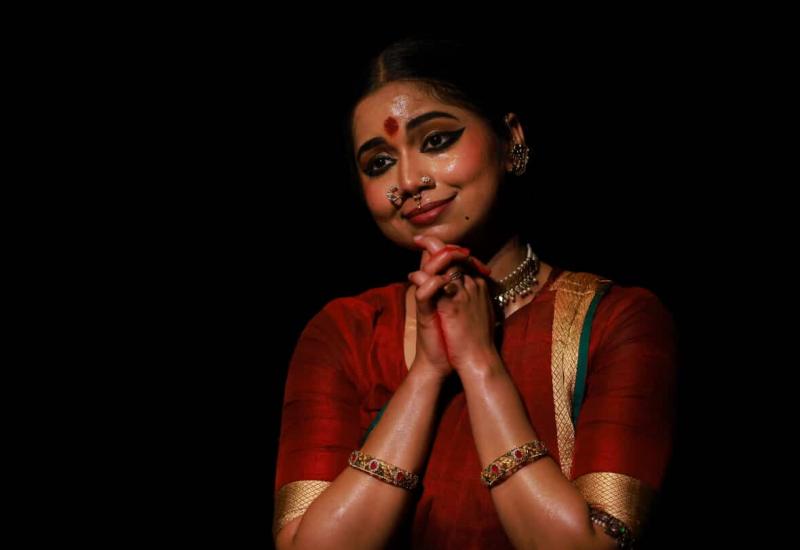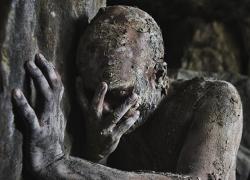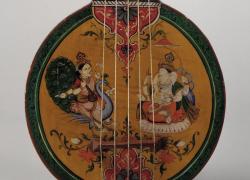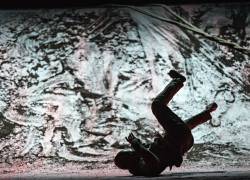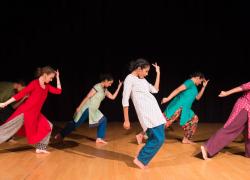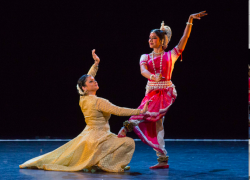Plurality of Abhinaya
Plurality of Abhinaya
Nilima Devi MBE and Anusha Subramanyam
Tuesday 3 July 2018,
Djanogly Theatre, Nottingham Lakeside Arts
Reviewed by Eric Foxley
This was a dance performance with a difference. The evening was an exploration with explanation of abhinaya, the art of expression in Indian classical dance. It was in equal parts an explanation and demonstration as well as a dance performance. The explanation was in the form of a conversation between the two dancers, apparently informal yet carefully planned to be informative.
The two performers are experts in two very different styles of Indian classical dance. Nilima Devi is an exponent of the north Indian kathak style, while Anusha Subramanyam specialises in bharatanatyam, a south Indian style from Tamil Nadu. Together they led us in an exploration of the concept of abhinaya, with some audience participation and audio playback of conversations as well as conversation and dance.
Abhinaya is the art of expression in dance. The technique expresses emotions using facial expressions as well as hand gestures and footwork linked to spoken bols (rhythmic syllables). The emotions taught include excitement, anger, surprise and guilt among others. In this performance the two artists are exploring and comparing in particular the technique of abhinaya to express the emotion of sringara or love in their two very different dance styles.
Sringara can represent love in its many different aspects, such as parental love, friendship, love of teachers/gurus, as well as romantic love. The performance explored romantic love in many varied and changing social attitudes, from the traditional right up to the modern, represented by the use of texting as an expression of feelings. Nilima spoke of the nayika or heroine who traditionally waits for her lover to return, but who in modern times has perhaps gone on a business trip and she doesn't know when he will be back.
This reviewer is always delighted when a performance uses live music. Tonight’s show was greatly enhanced by accompaniment of three virtuoso musicians. Prathap Ramchandran in percussion used both the north Indian tabla and the south Indian mridangam (normally played with two hands, but on this occasion with one hand while the other played the tabla); Sanchita Pal sang with wonderful freedom and expression; and Vijay Venkat’s flute floated magically over the scenes portrayed.
Overall the performance delighted my by the information and explanation given, allowing me to interpret the dance moves with more understanding than a straight dance show.
The performance was supported by Arts Council England, SAMPAD, KADAM, CICD, Asian legal advice service, Leicester City Council, Dance4 and Nottingham Lakeside Arts.

